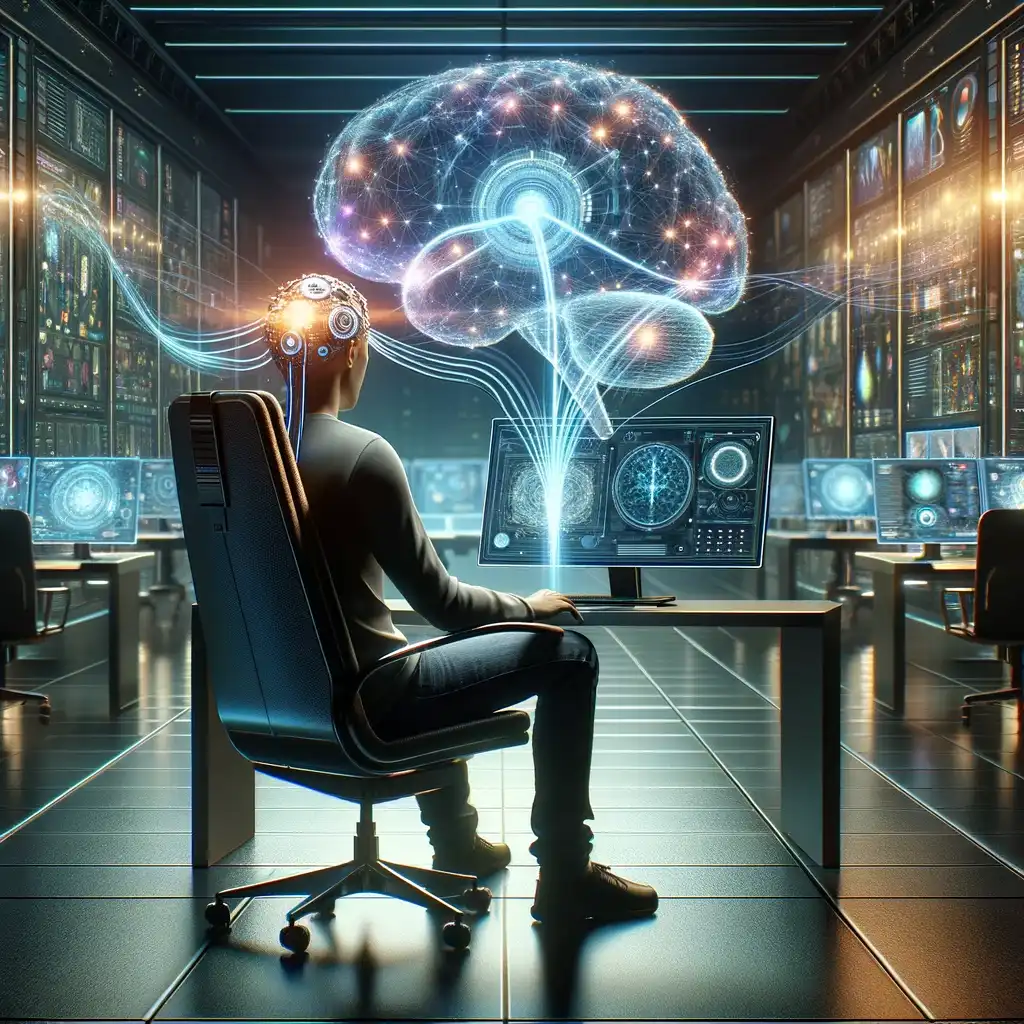"Unveiling the Future: Brain-Computer Interfaces and Artificial Intelligence"
Date: 2024-02-03
Author: AI Trends Writer
Introduction
In an era where the boundaries between human cognition and digital innovation continue to blur, the convergence of Brain-Computer Interfaces (BCIs) and Artificial Intelligence (AI) emerges as a beacon of futuristic technology. This fusion is not just redefining what is possible but is laying down a foundation for a reality that was once confined to the realm of science fiction. This post delves deep into the current state and future possibilities of BCIs reinforced by AI, seeking to demystify the complexities and highlight the transformative potential of these technologies.
The Genesis of Brain-Computer Interfaces and Artificial Intelligence
The concept of BCIs traces back to the 1970s, originating from the biomedical and neuroscience communities' desire to aid individuals with motor impairments. Meanwhile, the exploration of AI began as an ambitious quest to create machines that could simulate human intelligence. However, it is the recent advancements in computational power, data analytics, and machine learning that have accelerated the growth of these fields, setting a collision course that promises to redefine the interaction between humans and machines.
How BCIs Work: Bridging Minds and Machines
At its core, a BCI deciphers brain signals, translating them into commands that can control external devices or computer systems. This process involves several components, including signal acquisition, signal preprocessing, feature extraction, and finally, command execution. The introduction of AI into this equation amplifies the accuracy and efficiency of each step. Through machine learning algorithms, BCIs can adapt and improve over time, offering a more seamless integration between the user's intentions and the executed actions.
AI's Role in Enhancing BCI Capabilities
Artificial Intelligence plays a pivotal role in optimizing the functionality of BCIs. AI algorithms excel in pattern recognition, enabling the identification of complex neural patterns from raw data. This capacity not only enhances the decoding of neural signals but also facilitates the prediction of user intentions with unprecedented precision. Consequently, AI-powered BCIs offer the potential for more naturalistic and fluid interactions between humans and machines, paving the way for innovations such as thought-controlled wheelchairs, prosthetics, and even text composition.
Ethical Considerations and Privacy Concerns
As with any technology that intertwines so closely with the human psyche, BCIs and AI raise significant ethical and privacy questions. The prospect of hacking into someone's neural data or the potential misuse of brainwave information for manipulative purposes underscores the need for robust ethical frameworks and stringent privacy safeguards. Addressing these concerns is not just about preventing misuse; it's about ensuring that the development and application of these technologies are aligned with the greater good of society.
Future Horizons: Where BCIs and AI Could Take Us
Looking ahead, the potential applications of BCIs, enhanced by AI, are boundless. From revolutionizing the way we communicate and interact with our environment to offering new dimensions in rehabilitation, education, and entertainment, the possibilities are as vast as our imagination. Moreover, the fusion of BCIs and AI could unlock deeper insights into the human brain, potentially leading to breakthroughs in understanding and treating neurological conditions.
Towards a Harmonious Integration
The integration of BCIs and AI heralds a future where technology extends human capabilities in unprecedented ways. However, this vision demands more than technological innovation; it requires a collaborative effort across disciplines, ethical foresight, and a commitment to inclusivity. Ensuring that the benefits of these technologies are accessible to all, and not just a privileged few, is paramount in shaping a future that reflects the best of human and technological potential.
In conclusion, as we stand on the precipice of this new frontier, the synergistic relationship between BCIs and AI offers a glimpse into a future where the lines between mind and machine, biology and technology, become increasingly intertwined. This journey is not without its challenges, but the potential for positive impact on society, medicine, and individual empowerment is immense. As we continue to navigate this uncharted territory, one thing is clear: the fusion of BCIs and AI is not just shaping the future of technology; it's setting the stage for the next evolution of mankind.
In embracing this future, we must proceed with caution but also with a sense of wonder and optimism for the transformative potential that lies at the intersection of human intellect and artificial intelligence. The road ahead is filled with unknowns, but it is undeniably leading us towards a horizon brimming with possibilities that today, we can only begin to imagine.
